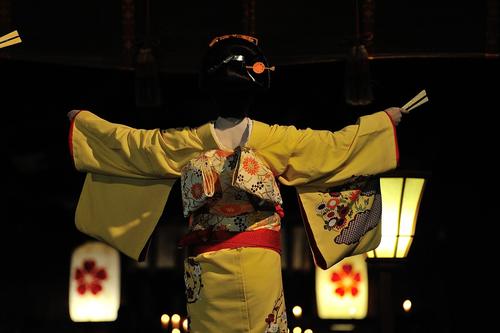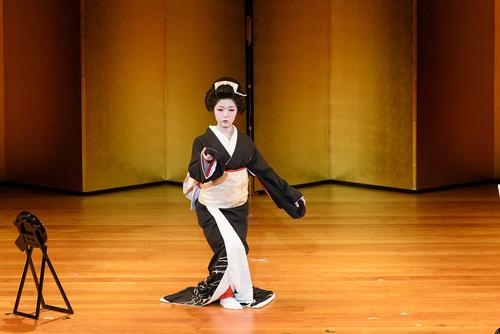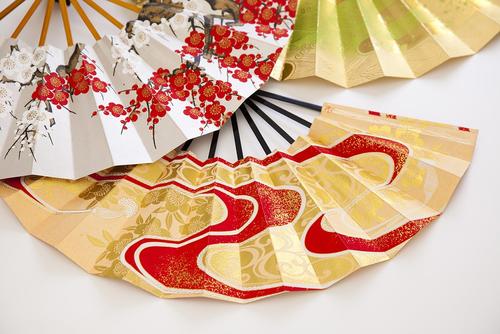The beauty of Japanese dance is captivating.
This article will provide a detailed explanation of the definition and origins of Japanese dance. In the second half, we will also introduce the characteristics of the five major schools of Japanese dance that are well-known in Japan.
If you're interested in trying out Japanese dance but aren't sure which style is right for you, be sure to check out this article.
What is Japanese dance?

Japanese dance is a general term for traditional Japanese dance.
It is generally considered to be a combination of the traditional dances "mai" and "odori." It is a very delicate dance, with stylized forms determined down to the smallest details of the movements.
Nihon Buyo is not just a folk dance, but also a form of dance that is intended to be performed on stage. Its specific characteristics become clear when we look at its origins and history.
Characteristics of Japanese dance as seen from its origins and history

The origin of Japanese dance is said to be the dance of Ame-no-Uzume-no-Mikoto, which was performed in front of the Ama-no-Iwato cave. However, this mythological episode is not the direct origin of Japanese dance.
It is said that the traditional performing arts of Noh and Kabuki have had the greatest influence on Japanese dance. Indeed, much of the Japanese dance performed today combines the relaxed movements of Noh with the lively movements of Kabuki.
The influence of Noh
Japanese dance inherits the techniques of earlier performing arts such as Noh, which date back 700 years. Modern Japanese dance can be said to be the result of adding new skills and accumulating refinement to these techniques. Furthermore, the instruments used in Noh music have become indispensable in the world of Japanese dance.
The influence of Kabuki
Japanese dance originated from Kabuki during the Edo period. Since ancient times, Kabuki had a problem of not allowing women to perform on stage due to moral issues. Therefore, it is said that Japanese dance began when women in the inner palace performed Kabuki dance.
Then, in the Meiji era, as many masters began to take up the mantle, a system of Natori qualifications and schools was put in place. During this period, Nihon Buyo gained a new status as a class for women to learn beautiful manners.
Five famous schools of Japanese dance

Japanese dance has its own distinctive image and choreography, depending on the schools that split up after the Meiji period. It is said that there are around 200 schools of Japanese dance today.
Here, we will introduce in detail the characteristics of the five most famous schools of Japanese dance in the world.
Hanayagi School
This school was started by the first generation, Jusuke Hanayagi.
Of the five major schools, this is the organization with the largest number of members. After being excommunicated from the Nishikawa school, where he was a choreographer, he taught dance to geisha in Yoshiwara, hence the name "Hanayagi School." The school is characterized by its meticulous choreography and uniformity within the school.
Fujima-ryu
This school has had a very close relationship with Kabuki since the Edo period.
Its greatest feature is its dynamic choreography and dancing, which stands out in the theater. The Fujima school has several branches. The head of the Fujima school, the Kanjuro school, has many heirs of prominent Kabuki figures as its pupils. The next largest branch is the Kan'emon school, which was founded by Kanjuro's disciples.
Wakayagi-ryu
This school was founded by Wakayagi Judo, a disciple of the first head of the Hanayagi school.
The Wakayagi school is known for its overall elegance and delicate choreography, as its head left the world of Kabuki to become independent after being excommunicated and was active in the world of geisha.The Wakayagi school has adopted a slightly unusual system of directors rather than a head of the school, and has produced many famous dancers.
Nishikawa School
It is the oldest and most prestigious school, founded during the Genroku period.
The founder of the school, who switched from the world of Kabuki to becoming a choreographer, was involved in the choreography of classic Kabuki dance pieces such as "Kanjincho," "Seki no Tobira," and "Sagi Musume," which are still beloved by many fans and actors today. He also established the Foundation for the Promotion of Japanese Dance, which transcends schools, and in recent years has been focusing on activities to convey Japanese dance to the younger generation.
Bando style
This is a school that has been passed down through generations of the famous Kabuki name Bando Mitsugoro, and is characterized by its strongest Kabuki influence.
The Bando school, being headed by a family of Kabuki masters, places great importance on "acting" in dance as well.
summary
Japanese dance is a general term for traditional Japanese dances that are performed on stage.
Japanese dance, which has been heavily influenced by Noh, still uses Noh instruments on modern stages. Kabuki, which has also had a great influence, is closely related to the five major schools.
You can also enjoy Japanese dance through classic Kabuki plays such as "Kanjincho," "Seki no Tobira," and "Sagi Musume." If you're interested, why not start by watching some dance?
This article has been partially re-edited by KARUTA from an article originally published on "Nihongo Biyori."
Any unauthorized reproduction or use of the contents, text, images, illustrations, etc. of this website is strictly prohibited.
